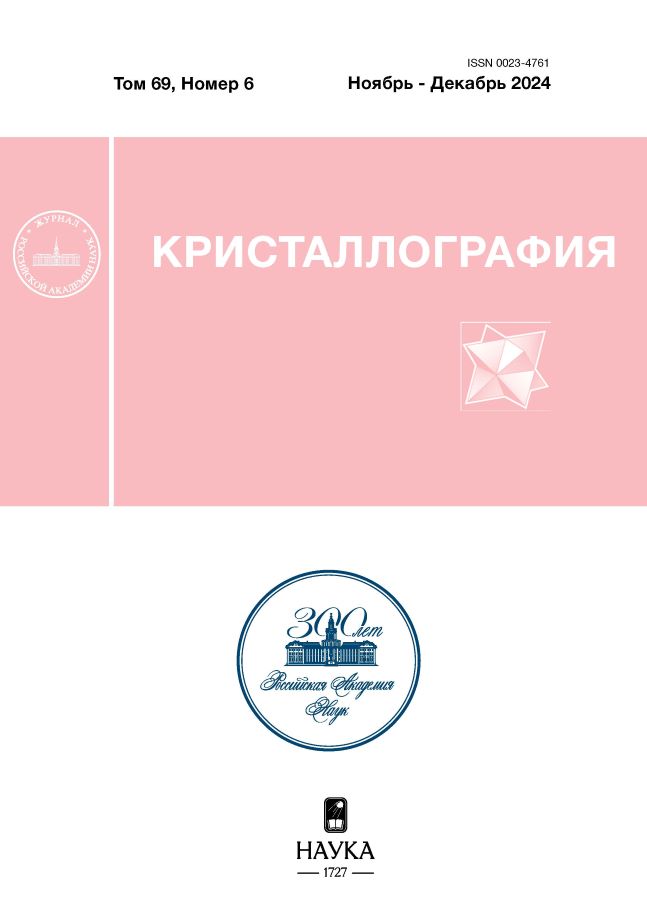Protein of unknown function from variovorax paradoxus with amino acid substitution n174k is able to form schiff base with plp molecule
- Autores: Ilyasov I.O.1, Minyaev M.E.2, Rakitina T.V.3, Bakunova A.K.1, Popov V.O.1, Bezsudnova E.Y.1, Boyko K.M.1
-
Afiliações:
- Federal Research Centre “Fundamentals of Biotechnology” of the Russian Academy of Sciences
- Institute of Organic Chemistry, Russian Academy of Sciences
- National Research Centre “Kurchatov Institute”
- Edição: Volume 69, Nº 6 (2024)
- Páginas: 981-986
- Seção: STRUCTURE OF MACROMOLECULAR COMPOUNDS
- URL: https://transsyst.ru/0023-4761/article/view/673623
- DOI: https://doi.org/10.31857/S0023476124060075
- EDN: https://elibrary.ru/YHTZPU
- ID: 673623
Citar
Texto integral
Resumo
Pyridoxal-5'-phosphate (PLP)-dependent enzymes are one of the most widely represented groups of enzymes in organisms, performing more than 150 different catalytic functions. Based on the three-dimensional structure, members of this group are divided into seven (I-VII) different fold types. Cofactor binding in these enzymes occurs due to the formation of a Schiff base with a conserved lysine residue located in the active site. A recently discovered protein from the bacterium Variovorax paradoxus (VAPA), which belongs to the IV fold type and has significant structural similarity to transaminases, contains an asparagine residue at the catalytic lysine position in the transaminases and, as a result, cannot form a Schiff base with PLP and does not have aminotransferase activity. In this research, a point mutant of VAPA protein with the N174K substitution was obtained and its 3D structure was determined. Analysis of the structural data showed that the introduced mutation restores the ability of VAPAN174K to form a Schiff base with a cofactor.
Texto integral
Sobre autores
I. Ilyasov
Federal Research Centre “Fundamentals of Biotechnology” of the Russian Academy of Sciences
Autor responsável pela correspondência
Email: kmb@inbi.ras.ru
Rússia, Moscow
M. Minyaev
Institute of Organic Chemistry, Russian Academy of Sciences
Email: kmb@inbi.ras.ru
Rússia, Moscow
T. Rakitina
National Research Centre “Kurchatov Institute”
Email: kmb@inbi.ras.ru
Rússia, Moscow
A. Bakunova
Federal Research Centre “Fundamentals of Biotechnology” of the Russian Academy of Sciences
Email: kmb@inbi.ras.ru
Rússia, Moscow
V. Popov
Federal Research Centre “Fundamentals of Biotechnology” of the Russian Academy of Sciences
Email: kmb@inbi.ras.ru
Rússia, Moscow
E. Bezsudnova
Federal Research Centre “Fundamentals of Biotechnology” of the Russian Academy of Sciences
Email: kmb@inbi.ras.ru
Rússia, Moscow
K. Boyko
Federal Research Centre “Fundamentals of Biotechnology” of the Russian Academy of Sciences
Email: kmb@inbi.ras.ru
Rússia, Moscow
Bibliografia
- Boyko K.M., Matyuta I.O., Nikolaeva A.Y. et al. // Crystals. 2022. V. 12. P. 619. https://doi.org/10.3390/cryst12050619
- Christen P., Mehta P.K. // Chem. Rec. 2001. V. 1. P. 436. https://doi.org/10.1002/tcr.10005
- Bezsudnova E.Y., Popov V.O., Boyko K.M. // Appl. Microbiol. Biotechnol. 2020. V. 104. P. 2343. https://doi.org/10.1007/s00253-020-10369-6
- Catazaro J., Caprez A., Guru A. et al. // Proteins. 2014. V. 82. P. 2597. https://doi.org/10.1002/prot.24624
- Bezsudnova E.Y., Boyko K.M., Popov V.O. // Biochemistry (Moscow). 2017. V. 82. P. 1572. https://doi.org/10.1134/S0006297917130028
- Bezsudnova E.Y., Dibrova D.V., Nikolaeva A.Y. et al. // J. Biotechnol. 2018. V. 271. P. 26. https://doi.org/10.1016/j.jbiotec.2018.02.005
- Liang J., Han Q., Tan Y. et al. // Front. Mol. Biosci. 2019. V. 6. P. 4. https://doi.org/10.3389/fmolb.2019.00004
- Cook P.D., Thoden J.B., Holden H.M. // Protein Sci. 2006. V. 15. P. 2093. https://doi.org/10.1110/ps.062328306
- Evans P.R., Murshudov G.N. // Acta Cryst. D. 2013. V. 69. P. 1204. https://doi.org/10.1107/S0907444913000061
- Vagin A., Teplyakov A. // J. Appl. Cryst. 1997. V. 30. P. 1022. https://doi.org/10.1107/S0021889897006766
- Collaborative Computational Project // Acta Cryst. D. 1994. V. 50. P. 760. https://doi.org/10.1107/S0907444994003112
- Murshudov G.N., Skubak P., Lebedev A.A. et al. // Acta Cryst. D. 2011. V. 67. P. 355. https://doi.org/10.1107/S0907444911001314
- Emsley P., Cowtan K. // Acta Cryst. D. 2004. V. 60. P. 2126. https://doi.org/10.1107/S0907444904019158
- Wallace A.C., Laskowski R.A., Thornton J.M. // Protein Eng. Des. Sel. 1995. V. 8. P. 127. https://doi.org/10.1093/protein/8.2.127
- Dai Y.N., Chi C.B., Zhou K. et al. // J. Biol. Chem. 2013. V. 288. P. 22985. https://doi.org/10.1074/jbc.M113.480335
Arquivos suplementares













